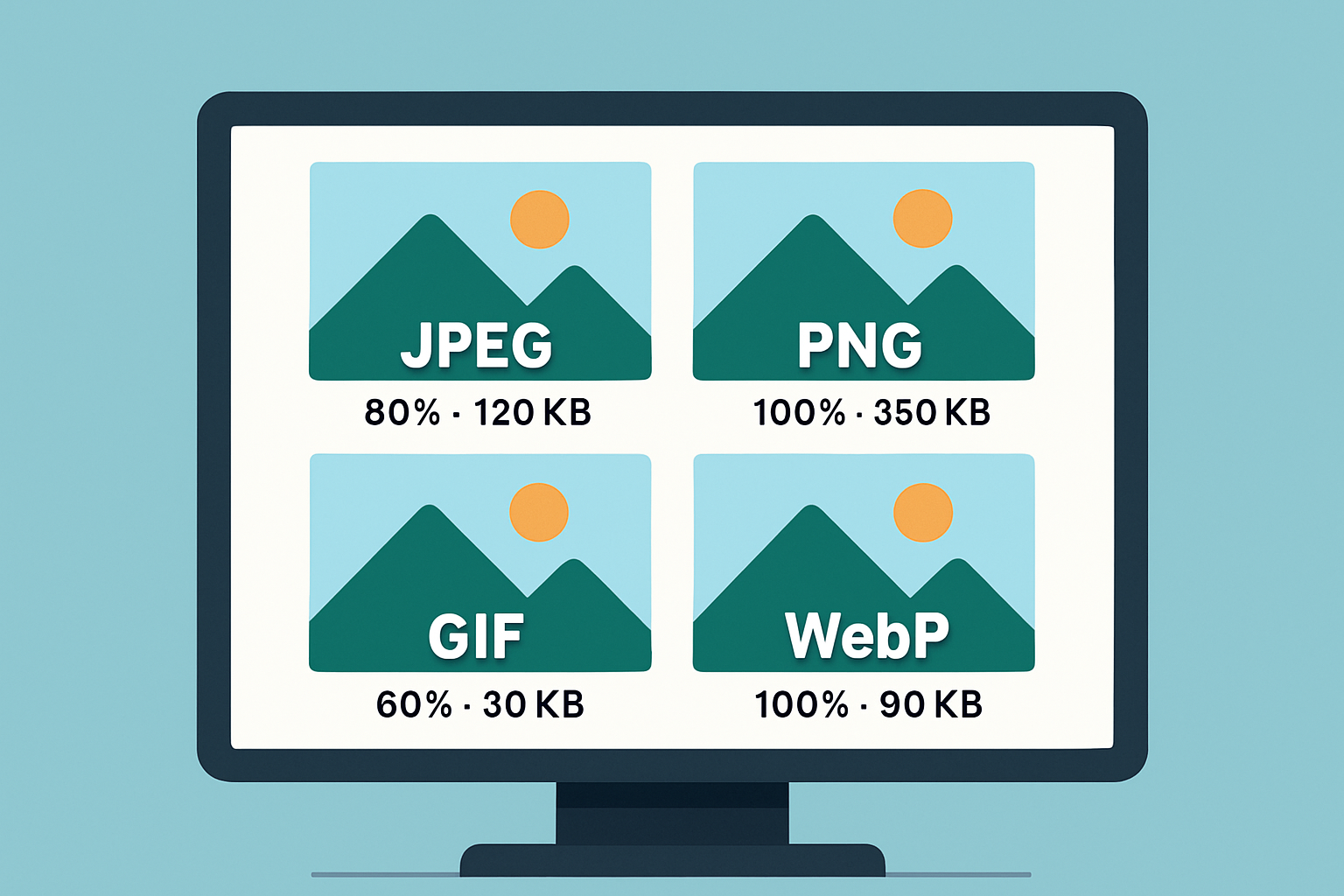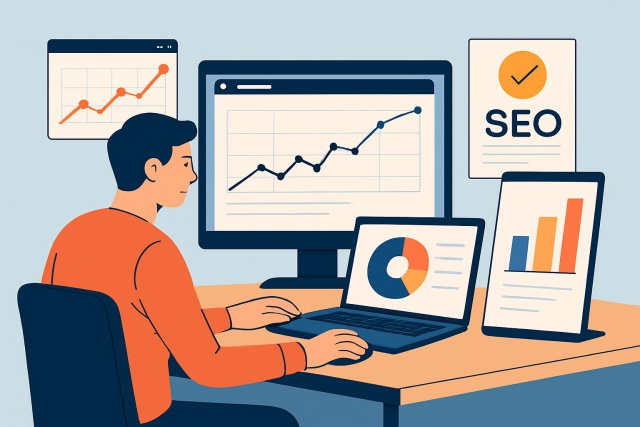
The Complete Guide to Car Dealer SEO
Unlock the full potential of your car dealership's online presence with this comprehensive guide to...

Images play a surprisingly big role in SEO and web performance. Choosing the right image file format from SEO recommended image file formats can make all the difference for website speed, user experience, and ultimately those important search engine rankings.
Image file formats are the behind-the-scenes wizards deciding how your image data gets saved and squeezed down. This directly affects quality, file size, and how smoothly your images play across devices and browsers. They also impact SEO by affecting page load times, the crispness of your visuals, and how search engines understand those images.
Picking the right image file format can really boost your page load speed and help keep bounce rates down. It also makes the experience on mobile devices smoother. Plus, it plays nicely with image SEO by making it simpler for search engines to index your images and nail down the correct schema.
Websites typically juggle many image formats like JPEG, PNG, GIF, SVG, WebP, AVIF and HEIC. Each one brings its own perks and usually shines when used for specific kinds of images—think photos, transparent graphics or those quirky little animations we all love.
| Image Format | Compression Type | Transparency Support | Ideal Use Cases | Browser Support | SEO Impact |
|---|---|---|---|---|---|
| JPEG | Lossy | No | The go-to choice for photographs and detailed images that need to shine | Supported just about everywhere you look | Well supported and zips along quickly on load |
| PNG | Lossless | Yes | Perfect for logos, icons, and those graphics where crisp edges matter | Supported everywhere you’d expect | Delivers top-notch quality though files tend to be on the chunky side |
| GIF | Lossless | Yes | Handy for simple animations and small icons that add a bit of flair | Supported everywhere, no surprises | Limited color palette can hold back SEO efforts |
| SVG | Vector (Lossless) | Yes | The ideal pick for logos, icons, and images that need to scale without a fuss | Supported in all modern browsers, though some older ones might throw a fit | Excellent for smooth scaling and plays nicely with SEO crawlers |
| WebP | Lossy & Lossless | Yes | Great for photos and images where transparency is a must-have | Supported by most modern browsers, which is always nice | Smaller file sizes give SEO a nice little boost |
| AVIF | Lossy & Lossless | Yes | Crafted for delivering efficient, high-quality images that don’t bog you down | Gaining ground with increasing support from major browsers | Advanced compression techniques can seriously boost SEO |
| HEIC | Lossy | Yes | Tailored for top-notch photos, especially if you’re cozy within the Apple ecosystem | Mostly backed by Safari on iOS and macOS | Web support is a bit limited, so use with a pinch of caution |
JPEG, often lovingly referred to as JPG, is the trusty old workhorse of image formats. It is the go-to choice when you want to balance decent quality with manageable file sizes, especially for photos. In my experience, JPEGs are like the reliable friend who’s always there when you need them—though they do take a bit of a hit in quality each time you save over them. Still, they are pretty much everywhere, from your camera roll to the web, quietly doing their job without much fuss.
JPEG is a lossy compression format that’s tailor-made for photographic images, especially when saving file space matters and you can live with a bit of quality loss. It nails that sweet spot between looking good and staying efficient.
PNG uses lossless compression and supports full transparency, making it a go-to choice for logos and graphics that need to look sharp and crisp. It can be a bit of a slowpoke loading-wise, thanks to its larger file sizes.
GIF supports animation and transparency but only allows 256 colors, which makes it less suitable for high-quality images.
SVG (Scalable Vector Graphics) is a vector image format that is great for logos, icons and illustrations. Unlike raster images that get blurry when resized, SVGs hold their sharpness at any size so they always look crisp on any device. Since they are built on text-based code, search engines can read them easily which gives your SEO a boost. On top of that, SVGs usually have tiny file sizes so they load quickly.
WebP is a fairly modern image format that pulls double duty with both lossy and lossless compression. It usually squeezes down file sizes quite a bit without throwing quality out the window. Most of the big-name browsers are on board with it, which gives websites a nice little boost in speed and SEO by trimming those pesky load times.
If you haven’t dipped your toes into the world of AVIF yet, it’s high time to do so. This image format is quietly shaking up the way we handle visuals online. Thanks to its clever compression techniques, AVIF manages to keep file sizes small without making images look like they’ve been through a blender. Crisp images that load fast and don’t hog your bandwidth.
What really sets AVIF apart is its heritage from the AV1 video codec, which means it is not just another pretty face in the crowd. It’s packed with modern features like high dynamic range and support for transparency, giving designers and developers a lot to smile about. While it’s gaining traction, there’s still a bit of a wait for universal browser support but, hey, Rome wasn’t built in a day.
In short, if you care about image quality and performance, keeping an eye on AVIF could save you headaches down the line.
AVIF is a relatively new image format built on the AV1 codec and it really shines when compressing images by cutting down file sizes dramatically without sacrificing quality. It’s versatile too and handles both lossy and lossless compression. It also supports transparency, high dynamic range (HDR) and a wide color gamut. More browsers like Chrome, Firefox and Edge are jumping on board quickly. AVIF is poised to boost SEO and web performance by trimming bandwidth use and speeding up page loads.
Let's dive into the world of HEIC, a file format that’s been quietly winning over many users. Though it sounds a bit technical, HEIC is just shorthand for High Efficiency Image Container, which essentially means it’s all about squeezing images into smaller packages without dropping quality. In my experience, it’s like the neat-freak of image formats—tidy, efficient, and surprisingly clever at saving space. Whether you’ve noticed it or not, your phone or camera might already be using HEIC to keep your photo library looking sharp while not hogging all your storage. It’s a bit of a behind-the-scenes hero in the tech world, silently doing its job without any fuss.
HEIC (High Efficiency Image Container) is a pretty clever format built on HEVC compression. Apple devices love it because it manages to deliver crisp, high-quality images without hogging too much storage space. As impressive as its visual quality and compression are, HEIC tends to act up in most browsers—so it’s not exactly the go-to for web use unless you convert it beforehand. When it comes to SEO, relying on HEIC directly can stir up compatibility headaches.

Comparison of popular SEO recommended image file formats highlighting compression efficiency and quality differences
Picking the right image format is a bit of an art—it means sizing up what the image shows, the quality you want, whether you need transparency and which browsers your audience is likely to use.
Figure out what the image is actually for—whether it’s a photo, logo, graphic or a cheeky little animation.
Mull over the image quality and the level of detail needed to keep its visual punch intact.
Decide if your image needs transparency or maybe some animation to liven things up.
Double-check browser support to make sure it plays nice across your audience’s devices.
Pick a compression format—go lossy if speed is your best friend or stick with lossless if preserving every pixel counts.
Keep an eye on how your chosen format impacts load times and watch those SEO metrics like a hawk to back up your decision.
Optimizing images is about more than just settling on the right format. Resizing them smartly and using good compression tools help boost SEO and user experience. Embracing lazy loading and adding clear alt text also contribute.
There are plenty of handy tools out there that make image optimization a breeze, from simple compression and conversion utilities to robust SEO auditing platforms that take a close look at how your images perform and gel with your site.
New formats like AVIF and improved browser support are ushering in a new era of more efficient, feature-packed images online. As these technologies evolve, SEO strategies are increasingly zeroing in on SEO recommended image file formats to strike that sweet spot between top-notch quality and snappy load times. AI-driven optimization and adaptive image delivery are becoming the norm, letting us make smarter format choices and craft more personalized experiences that really align with SEO goals.
Getting ahead of the curve by jumping on advanced image file formats like AVIF and WebP early can really pay off for businesses looking to boost their web performance. Plus, it’s a smart move to keep those SEO benefits intact, especially as user expectations and search algorithms keep shifting in ways that can feel a bit like trying to hit a moving target.

Unlock the full potential of your car dealership's online presence with this comprehensive guide to...

Discover comprehensive strategies for optimizing single page websites for SEO. Master keyword intent...

Master web development SEO with this practical guide using Semrush. Learn to audit, optimize, and tr...

Unlock your restaurant's potential with effective SEO strategies tailored to local search. Learn how...